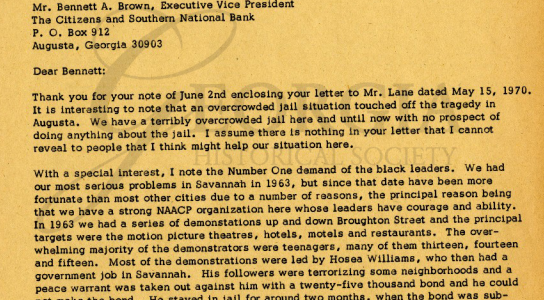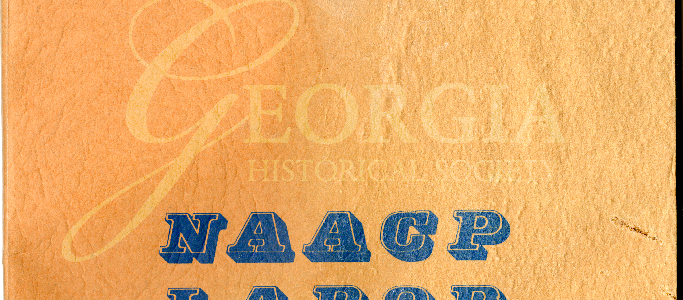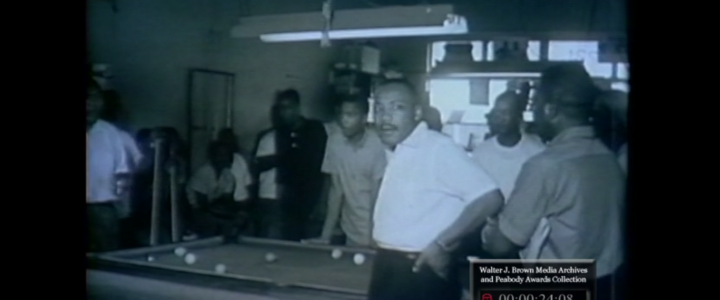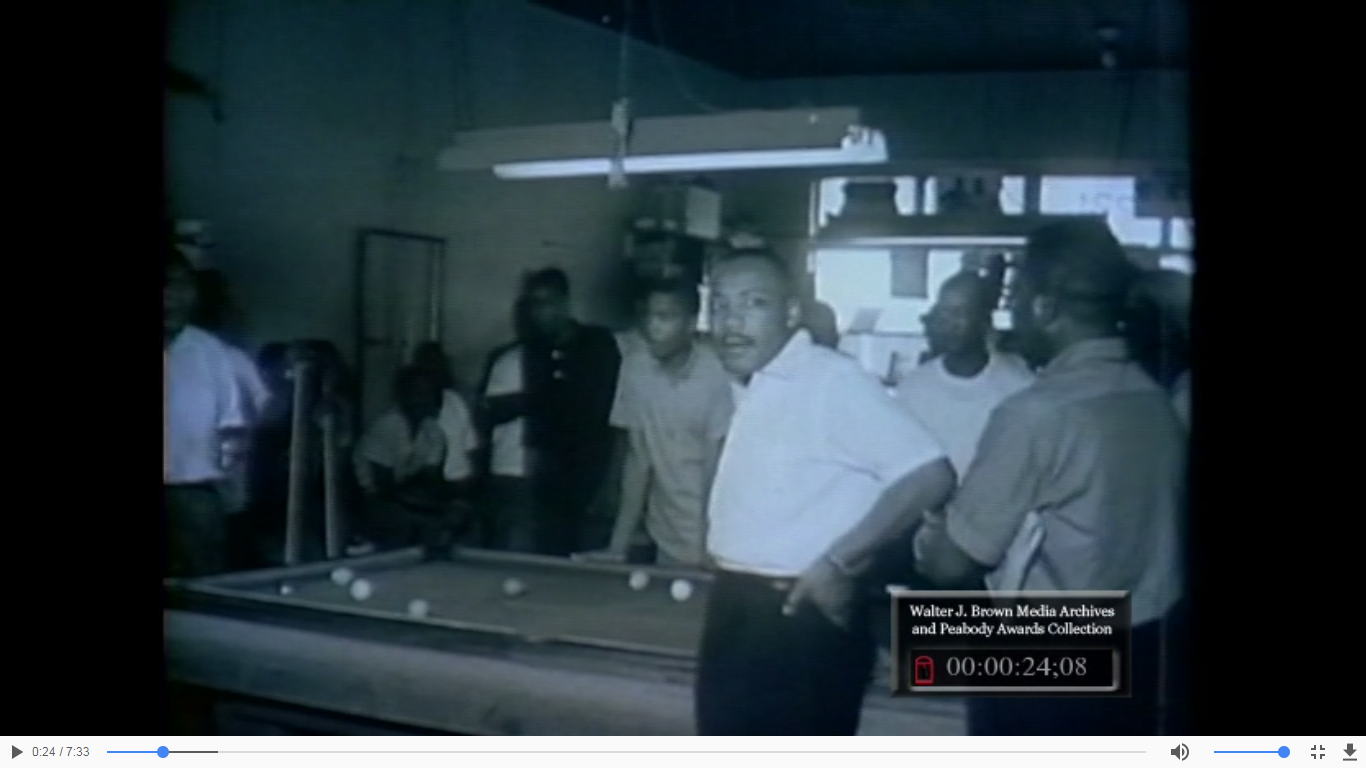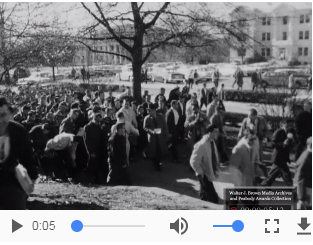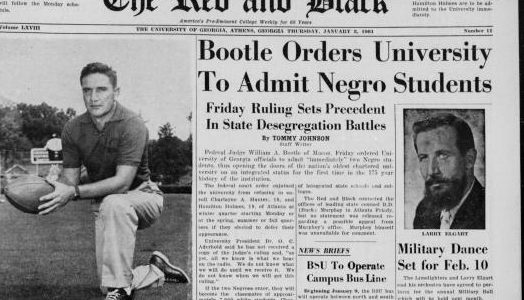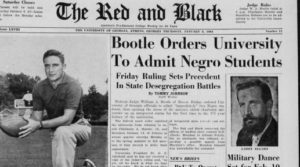Atlanta and Albany are often the focus of the Civil Rights Movement in Georgia, but the movement took root in towns and communities throughout the state. In Savannah, Georgia, the civil rights movement was relatively peaceful compared to that of other Southern cities, primarily due to the cooperation of local businessmen and politicians with African-American leadership. One such business leader was Pratt Adams, Jr. Adams. (1915-1981) was a third-generation Savannah lawyer in his family’s law firm of Adams, Adams, Brennan, and Gardner. After serving in World War II, he settled back into his law career in Savannah. Adams was very active in many civic organizations, including Civic Progress, Inc. Business leaders such as Adams who founded this group realized that the future of the city’s and their own prosperity depended upon minimizing protests and violence. The Bi-Racial Committee, composed of members of the Civic Progress group and several prominent Civil Rights leaders, met several times in 1963 to discuss how to bring about an end of segregation in local hotels, theaters, and restaurants. This primary source set offers a digitized selection of papers from the A. Pratt Adams, Jr. papers housed at the Georgia Historical Society.
The documents in the PDF are in reverse chronological order. The first document in the set is a letter written by A. Pratt Adams, Jr. to Mr. Bennett A. Brown, executive vice president of The Citizens and Southern National Bank. Adams was responding to Brown’s letter concerning the May 11, 1970, race riot in Augusta that resulted in six deaths. The second document is a letter from the Vice President of the Central of Georgia Railway law department. The third document contains the minutes from a meeting held between white businessmen and black leaders in Savannah on February 16, 1965. The final document comes from the August 1, 1963, meeting of the Bi-Racial Committee.
Selection from the A. Pratt Adams, Jr. (1915-1981) collection, 1959-1971. From the Georgia Historical Society Manuscript Collection. MS 2165.
Click here to view the item description in the Georgia Historical Society catalog.

